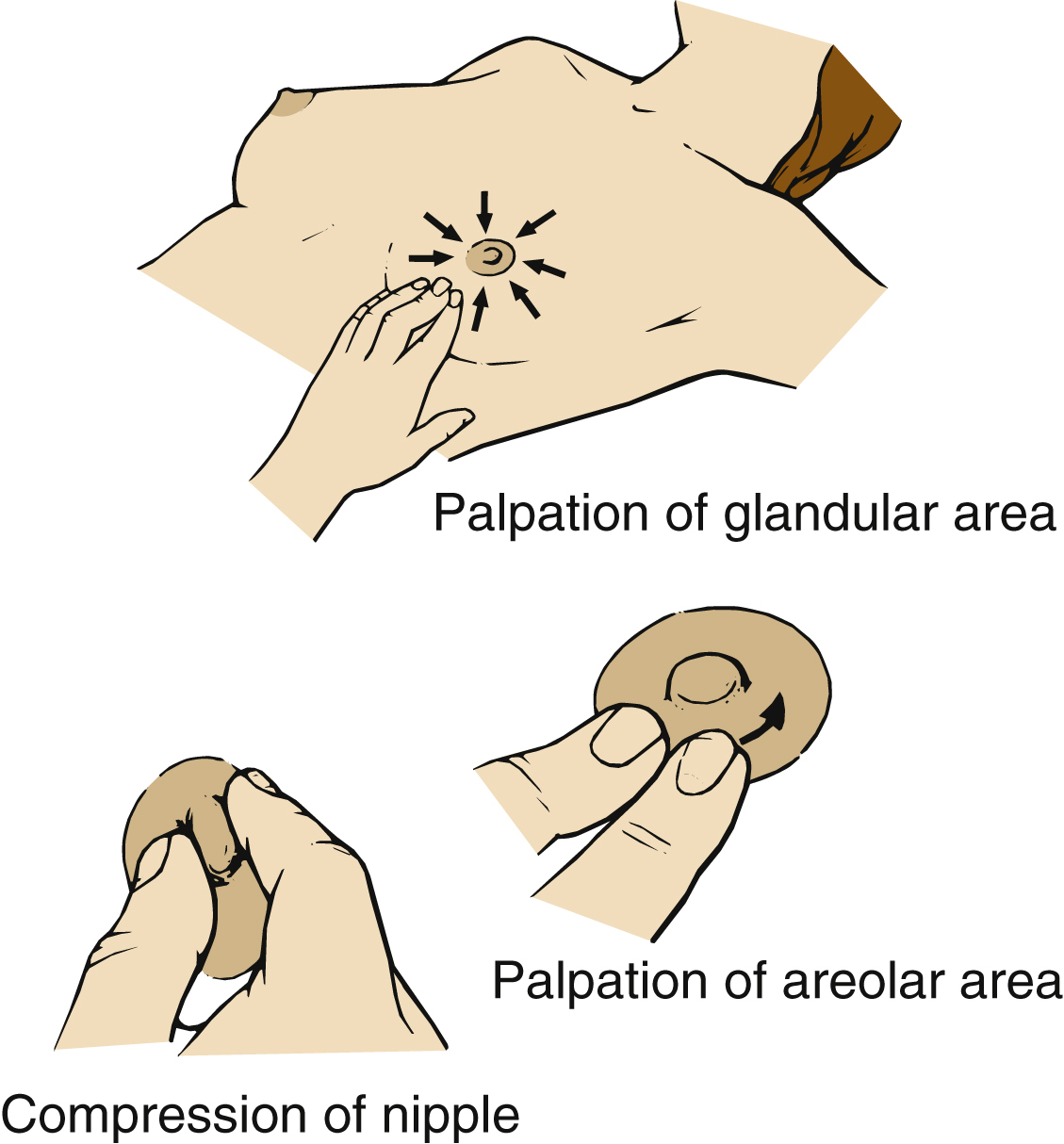breast examination, a process in which the breasts and their accessory structures are observed and palpated in assessing the presence of changes or abnormalities. There are benefits and limitations to self-breast examination, but in general women should be familiar with how their breasts normally look and feel. A clinical breast examination is performed by a health professional; a breast examination performed by the patient is known as a self-breast examination. See also self-breast examination, clinical breast examination. ▪ METHOD: The breasts are observed with the patient sitting with her arms at her sides; sitting with her arms over her head, back straight, then leaning forward; and, finally, sitting upright as she contracts the pectoral muscles by placing hands on hips. The breasts are observed for symmetry of shape and size and for surface characteristics, including moles or nevi, hyperpigmentation, retraction or dimpling, edema, abnormal distribution of hair, focal vascularity, or lesions. With the patient still sitting, the axillary nodes and the supraclavicular and subclavicular areas are palpated. With the patient lying on her back, each breast is shifted medially, and the glandular area in each is palpated with the flat of the fingers of a hand in concentric circles or in a pattern like the spokes of a wheel, from the periphery inward. The areolar areas, the nipples, and the axillary tail of Spence in the upper outer quadrant extending toward the axilla are then palpated. The nipple is squeezed to check for discharge. ▪ INTERVENTIONS: The patient should be taught to perform a self-breast examination and encouraged to do it monthly. The American Cancer Society recommends that women start the exams in their early 20s. The breasts should be examined when they are not tender or swollen. Many women find it helpful to check their breasts every time they shower for the first few months after being taught the procedure, to practice and to become familiar with their own breasts. ▪ OUTCOME CRITERIA: Early diagnosis greatly improves the rate of cure in cancer of the breast.

